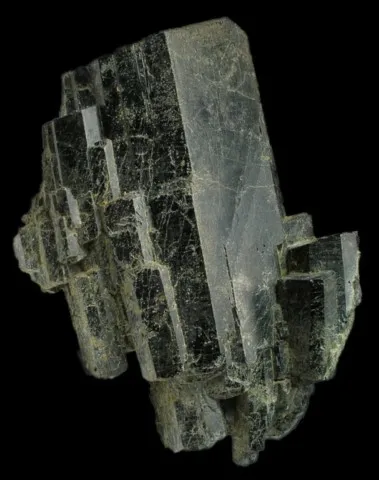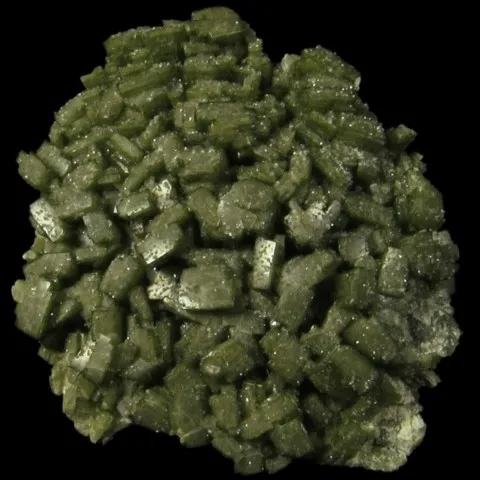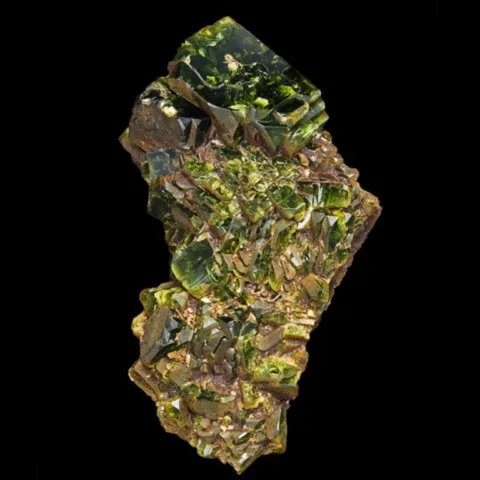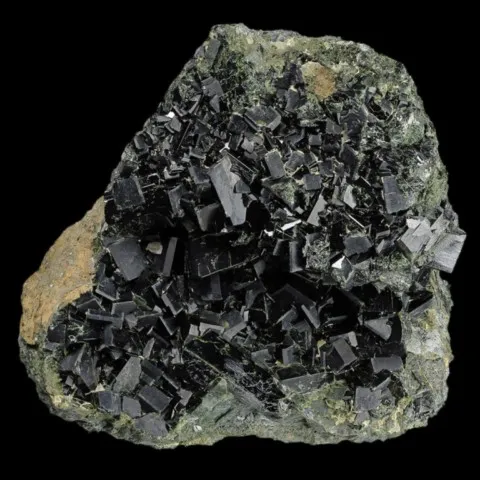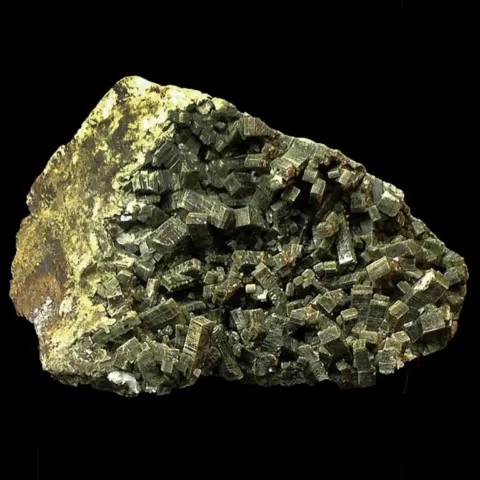HEDENBERGITE
Class : Silicates
Subclass : Inosilicates
Crystal system : Monoclinic
Chemistry : CaFeSi2O6
Rarity : Quite common
Hedenbergite is a common mineral of the pyroxene group (clinopyroxene family). It is the iron pole of a continuous series that it constitutes with diopside, the magnesium pole, the intermediate terms being formerly designated under the name of salite, a term now almost abandoned. By replacing iron with manganese, hedenbergite forms another series towards johannsenite. Hedenbergite is less common than diopside and is found mainly in metamorphic contact deposits linked to monzonites and granodiorites, particularly in magnetite skarns and skarnoids, in association with hematite, pyrrhotite and andratite. It is rarer in basic (gabbros) or intermediate (syenites) magmatic rocks. It owes its name to the Swedish chemist M.A. Ludwig Hedenberg who described this mineral. Hedenbergite occurs in prismatic crystals, sometimes slender, pseudotetragonal with a square or octagonal section, and striated according to cleavage, or in grainy masses. Its color increases with the iron content, going from dark green to brownish green and black. Some chatoyant specimens or those showing an asterism can be cut into cabochons.
Main photo : Hedenbergite from Cantley, Les Collines-de-l'Outaouais RCM, Outaouais, Quebec, Canada © Gerard van der Veldt
Heddenbergite in the World
Twinning
Single and polysynthetic twins are known on {100} and {010}.
Fakes and treatments
No fakes recorded for this mineral species.
Hardness : 5.5 to 6.5
Density : 3.56
Fracture : Irregular to conchoidal
Streak : White to gray
TP : Opaque to transparent
RI : 1.699 to 1.757
Birefringence : 0.029
Optical character : Biaxial +
Pleochroism : Low
Fluorescence : None
Solubility : Insoluble
Magnetism : ParamagneticRadioactivity : None

